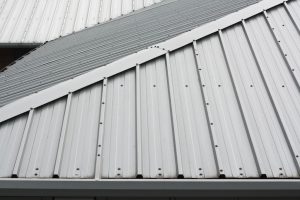 Musicians and their instruments are inseparable, and that’s considered a universal truth. Creating music requires that it be done with inspiration and enough space to compose a wonderful melody and catchy lyrics. While some musicians are able to record in a professional studio, not everyone can afford it, especially if they’re going the indie route. The closest they can have is a home setup. As ideal as that may sound to you, it may not sit well when you have other people in the house or have neighbors for that matter. They might find you a little too noisy, or they may be too distracting for you. That’s why you should control where the sound comes and goes in your room. But where’s all the noise coming from?
Musicians and their instruments are inseparable, and that’s considered a universal truth. Creating music requires that it be done with inspiration and enough space to compose a wonderful melody and catchy lyrics. While some musicians are able to record in a professional studio, not everyone can afford it, especially if they’re going the indie route. The closest they can have is a home setup. As ideal as that may sound to you, it may not sit well when you have other people in the house or have neighbors for that matter. They might find you a little too noisy, or they may be too distracting for you. That’s why you should control where the sound comes and goes in your room. But where’s all the noise coming from?
Openings and Walls
One of the most obvious spots where sound and noise flow in and out of is the openings. Installing double-pane windows can help lessen the effects. As for your door, you can choose to replace it with one that’s made of a thicker material. Your walls are also a prime offender when it comes to sound traveling in and out of your studio. If you want a more or less permanent solution to that, you can choose blown-in insulation applied by an insulation company in Kansas City. However, if you don’t have the cash yet, you can also use cardboard egg trays.

Flooring
Walls and openings aren’t the only areas where sound travels. You might not realize it, but sound can also escape through the floor, especially when your studio is on any floor aside from the ground and basement. If you’re living with someone else in the house, you’ll still get told off about how noisy you are. Fortunately, it’s easy to soundproof your floor by applying thick foam on it topped with carpet. You don’t have to break your floor apart, and you can get the materials from any store that sells them. It will also be an awesome feeling to step on it, too.
Interior
Soundproofing isn’t just about making sure that what you produce won’t be heard outside. It also involves making sure that your music won’t bounce around inside your walls. Recording won’t be much fun when everything in your room adds unnecessary echoes to whatever you’re doing. With that said, have you ever been to a theater before? You might have noticed the presence of huge drapes and curtains. Aside from being part of the décor, they also control sound. You can apply the same concept to your home studio and put up thick curtains to dampen the audio.
Noise control and soundproofing are proof that you do not only care for your endeavors but also for the peace and privacy of the people around you. Aside from that, noise pollution can also be a problem for the community. If not paid attention to, it may lead to other disagreements. Your music deserves a place where it can thrive and develop until its official release.






